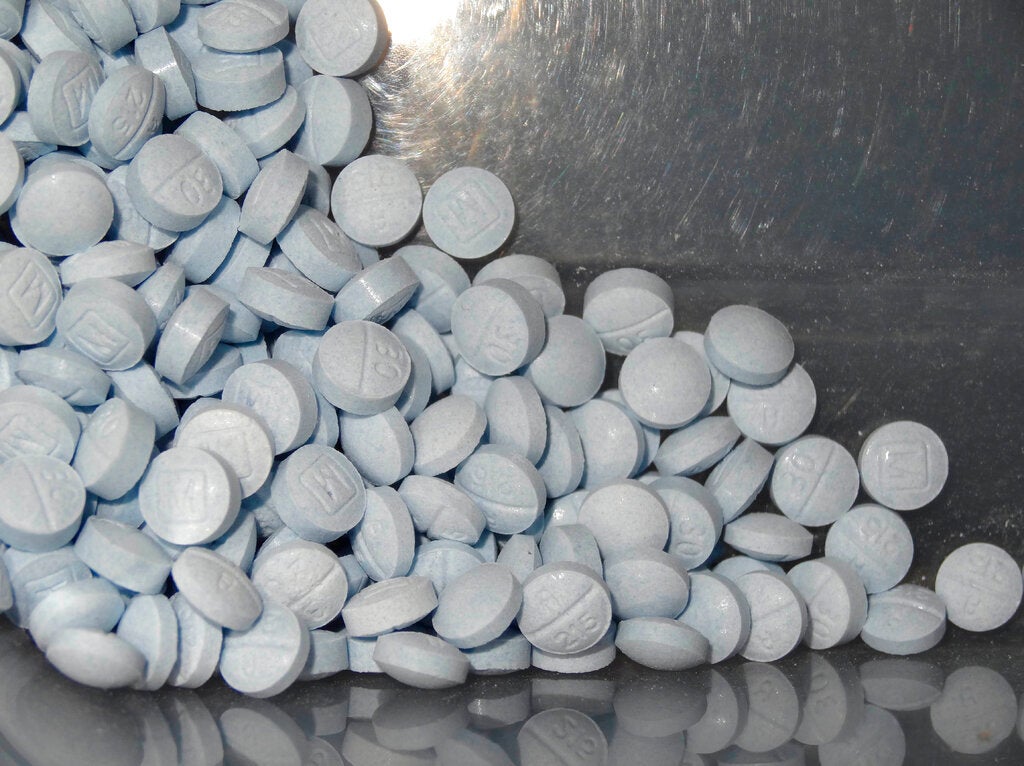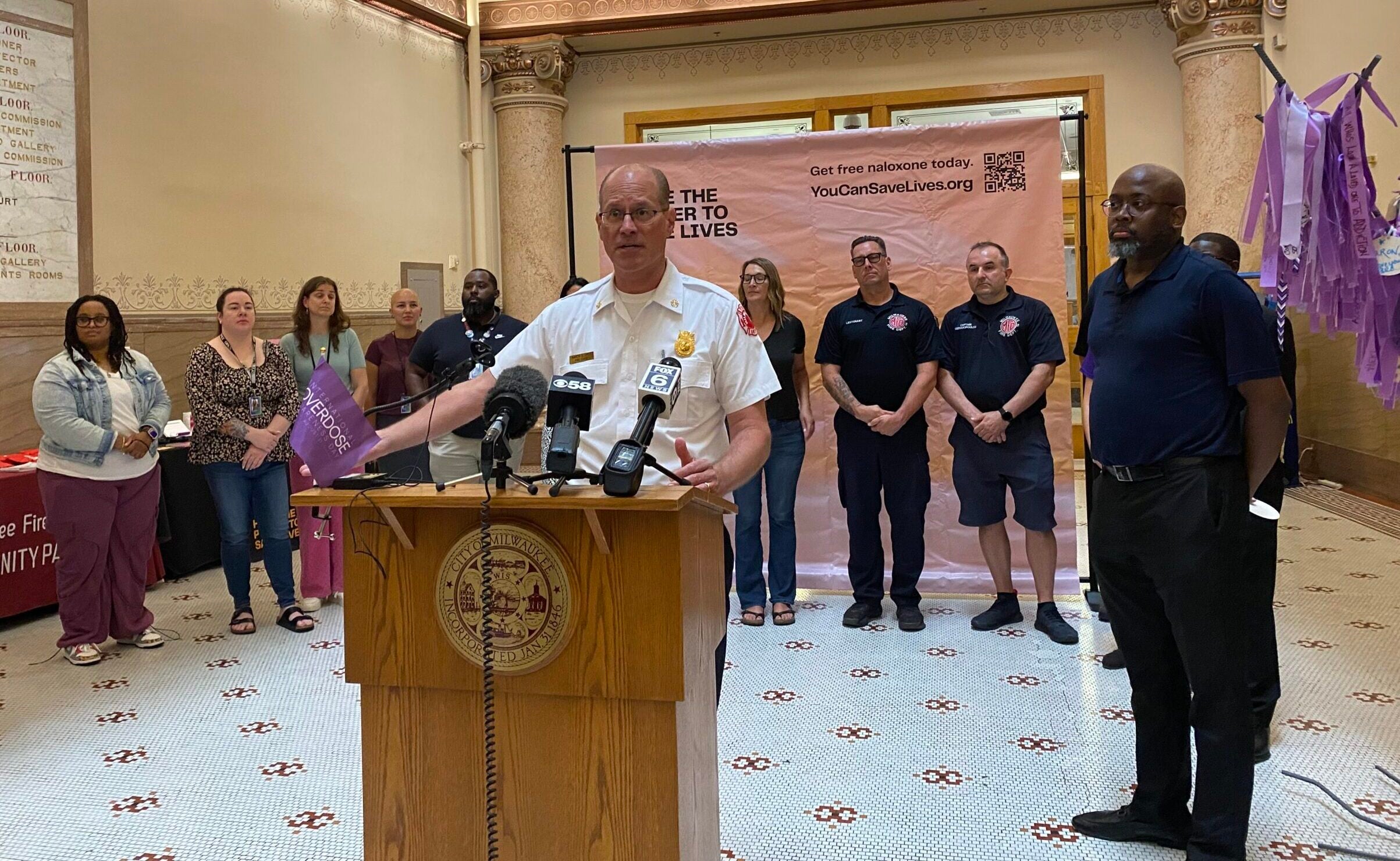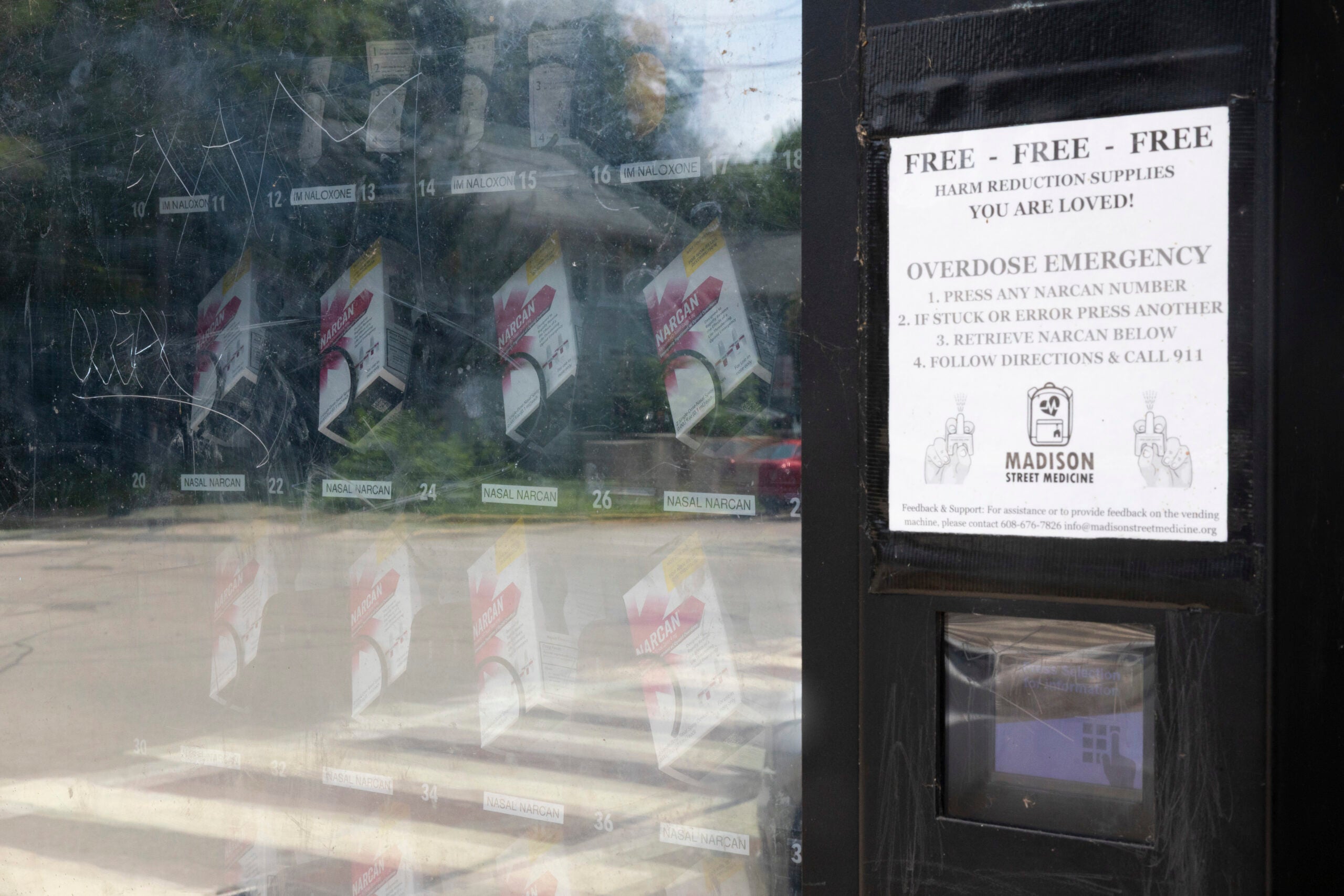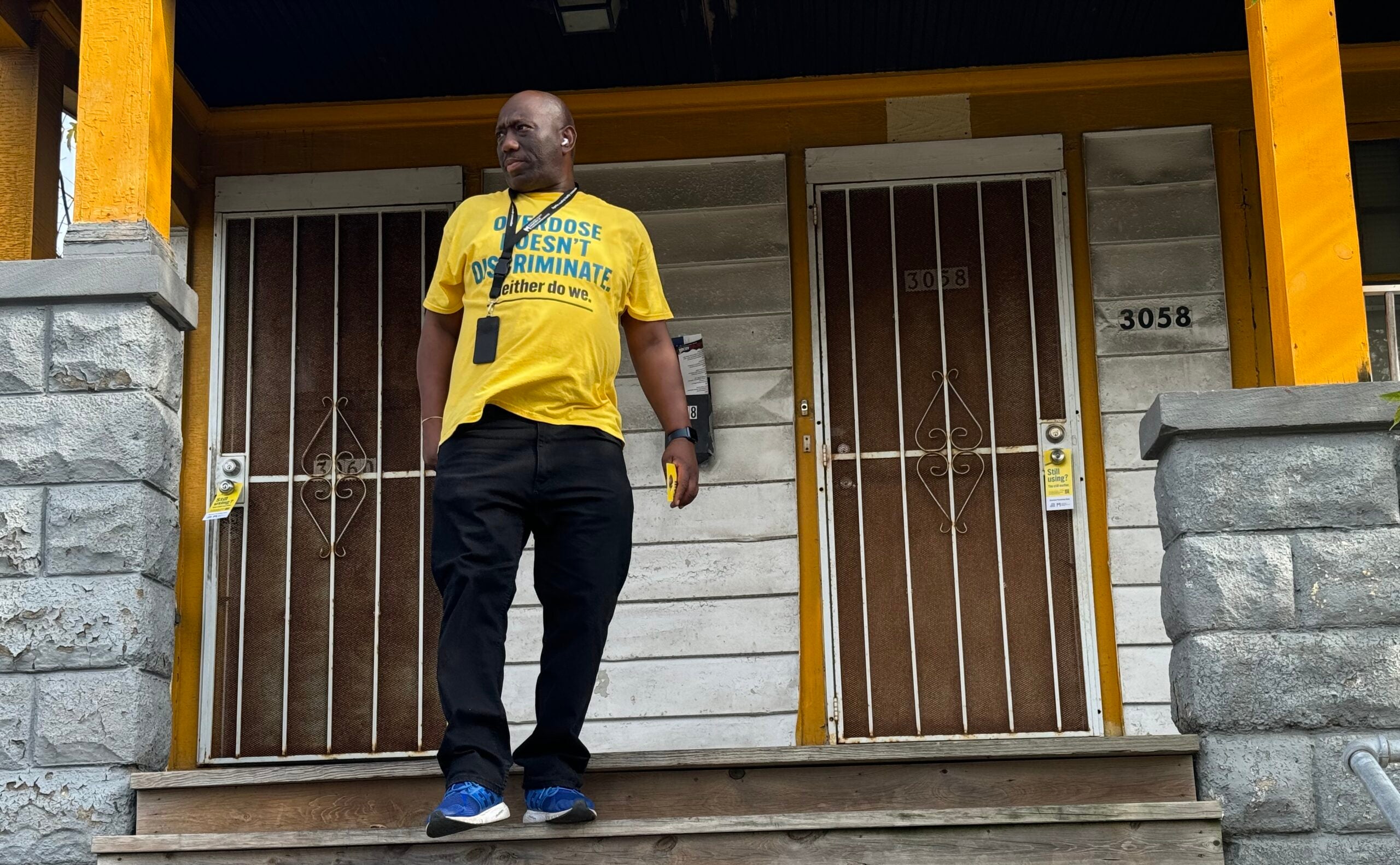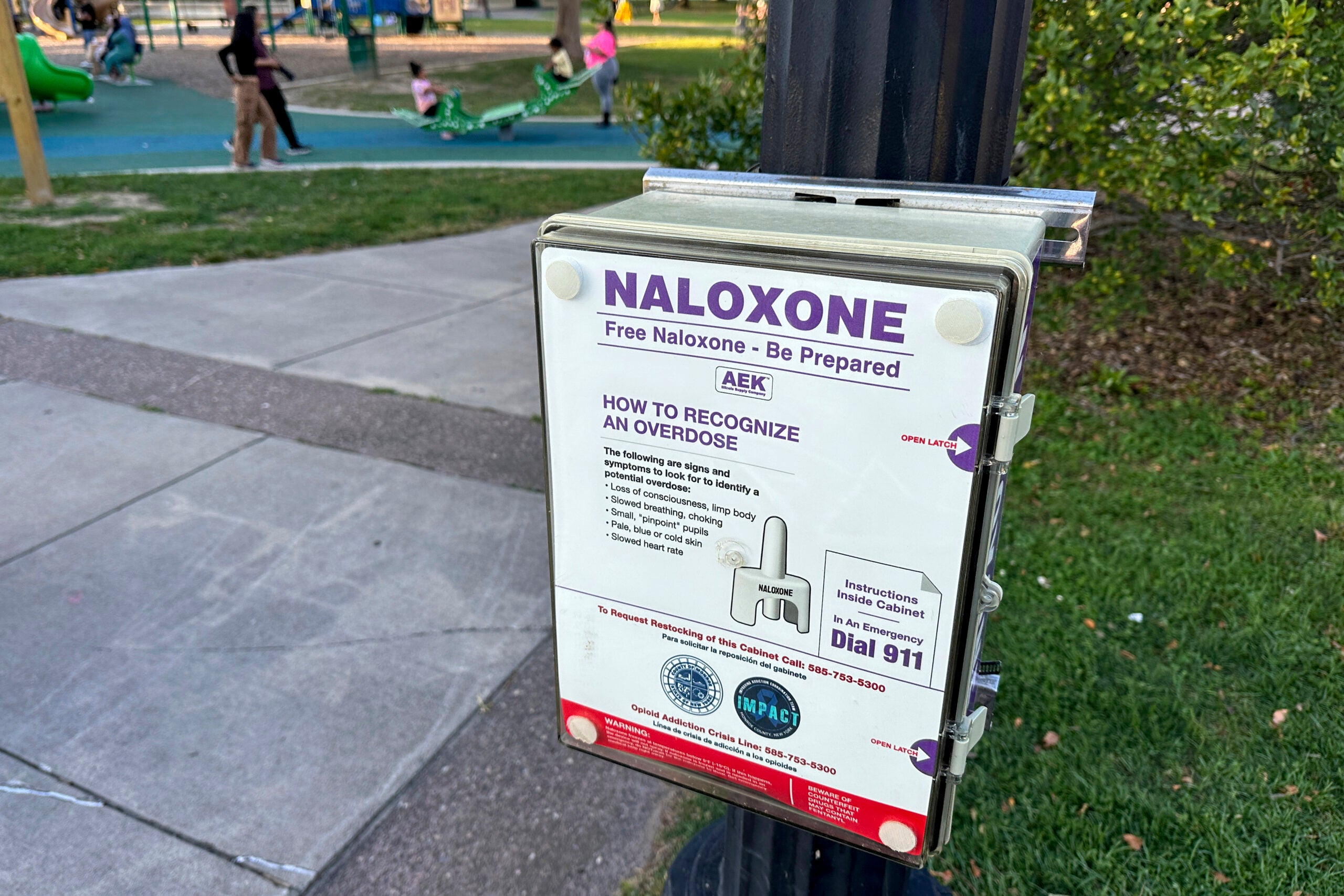Millions of dollars in federal funding and settlements with pharmaceutical companies are heading to Wisconsin this year. Lawmakers and health officials hope the money can help drive down record numbers of opioid-related deaths in the state.
There were 1,427 opioid overdose deaths in 2021, according to the most recent data from the Wisconsin Department of Health Services. The grim statistic eclipsed the 1,227 opioid related deaths recorded in 2020 and represented a 70 percent increase over the prior three years.
Through federal action and lawsuits brought by states like Wisconsin against major pharmaceutical companies, more money for local health departments is on the way.
News with a little more humanity
WPR’s “Wisconsin Today” newsletter keeps you connected to the state you love without feeling overwhelmed. No paywall. No agenda. No corporate filter.
Included in the current federal omnibus spending bill is an additional $1.6 billion in opioid response grants slated for states and tribal nations. Democratic Wisconsin U.S. Senator Tammy Baldwin was a lead author of the State Opioid Response Grant Authorization Act, which was included in the budget signed by Democratic President Joe Biden in December.
In an interview with WPR, Baldwin said flexibility is a key tenet of the act and will allow states and tribes to use the funds to respond to opioid abuse and overdoses along with other addictive drugs like cocaine and methamphetamine.
“Frankly, having that flexibility really allows communities to combat the (drug) epidemic, in the most effective and evidence-based way possible,” Baldwin said.
The minimum grant award was set at $4 million for states and $250,000 for territories, according to the legislation. Some of the funding will boost access to the opioid reversal drug naloxone, also known by the brand name Narcan, Baldwin said.
“And so getting help in assisting communities and local nonprofits access naloxone or Narcan and deploy them where needed in the community is a critical part to reducing the number of overdose deaths that we’ve been seeing,” Baldwin said.
In fiscal year 2022, DHS received $16.9 million from the State Opioid Response Grant program. Other recipients last year included the Stockbridge-Munsee Band of Mohican Indians, which received $238,700 and the St. Croix Chippewa Indians of Wisconsin, which received $500,000.
In addition to the federal funds, Wisconsin will be getting around $8 million from two legal settlements against pharmaceutical companies Cardinal, McKesson and MarisourceBergen, according to the DHS.
The department launched a survey last week asking residents how the money can be used most effectively.
During a Monday interview with WPR’s “The Morning Show,” DHS Director of Opioid Initiatives, Paul Krupski, said the same approach was used in 2022. In that survey, a number of respondents called for more education in Wisconsin high schools about the dangers of opioid painkillers and the prevalence of fentanyl mixed with other types of recreational drugs.
“Last year, something that was really reaffirming was that what we heard from the public was the investments that we are making and what we are prioritizing is what people want to see,” Krupski said. “They just want more of it.”
Krupski said Wisconsin appeared to be making progress in reducing the number of opioid related deaths prior to the COVID-19 pandemic. State data show an 8.4 percent decline between 2017 and 2018.
“So, we know we can turn this around,” Krupski said. “We know the plan that we have in place, the work that we’re doing was making that difference. But again, just as so many things in life, the pandemic created a lot of changes. So, we just have to get back on track and get people back into those services that they need.”
Editor’s note: This story has been updated to reflect the minimum award from the State Opioid Response Authorization Act is $4 million for states and $250,000 for territories.
Wisconsin Public Radio, © Copyright 2025, Board of Regents of the University of Wisconsin System and Wisconsin Educational Communications Board.

